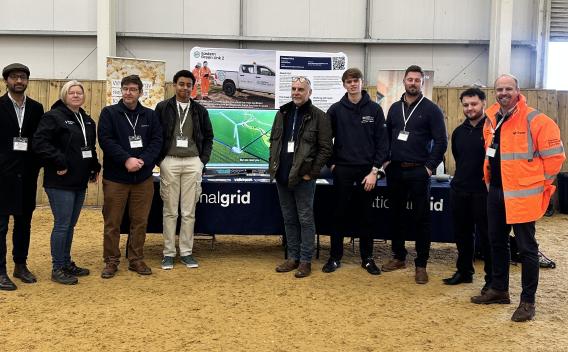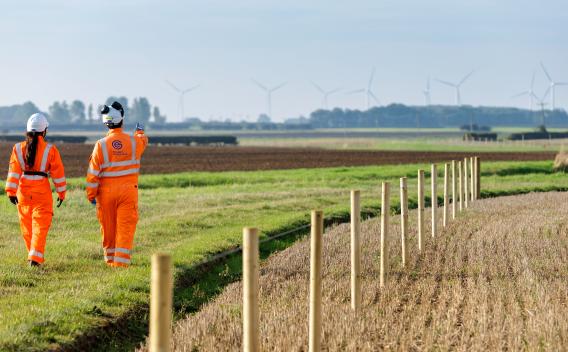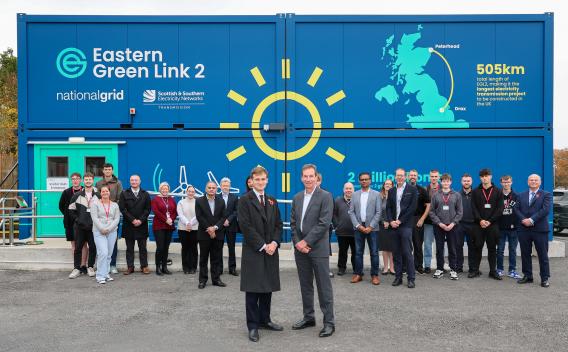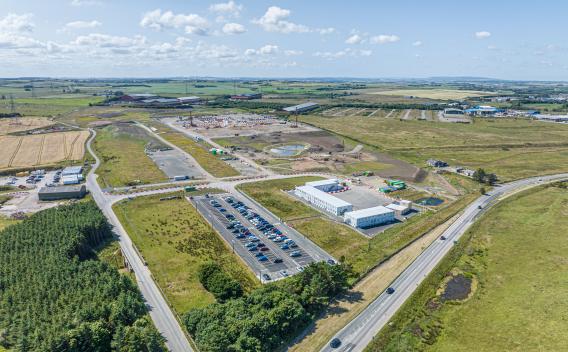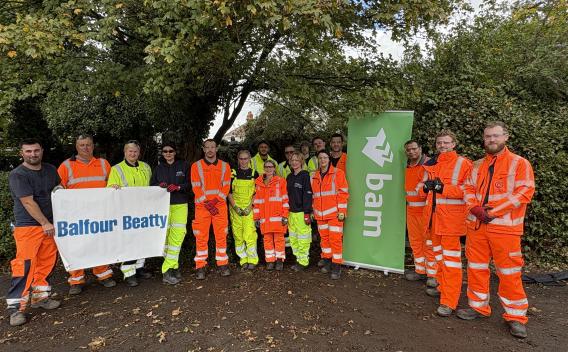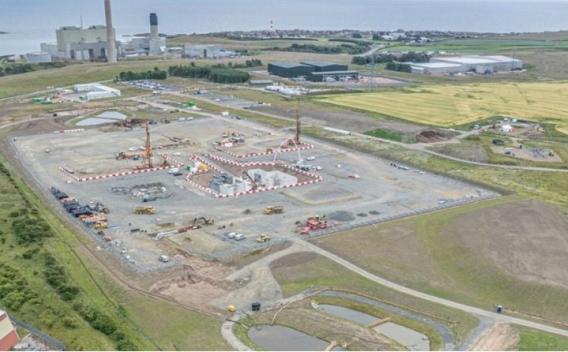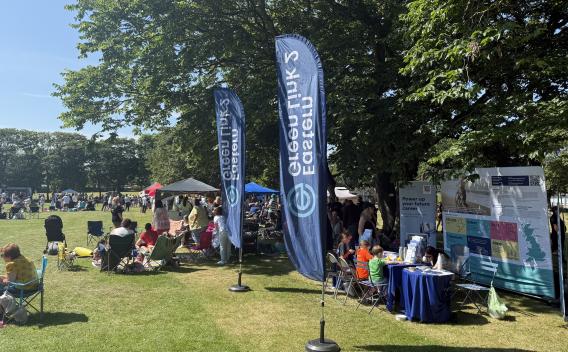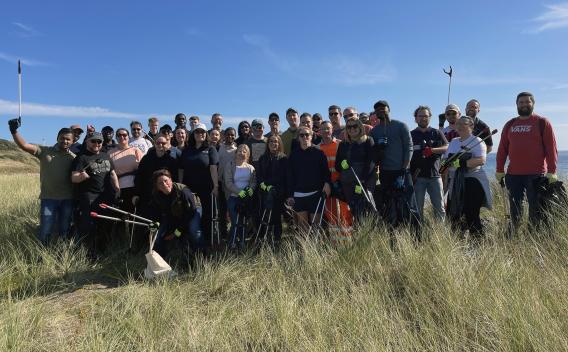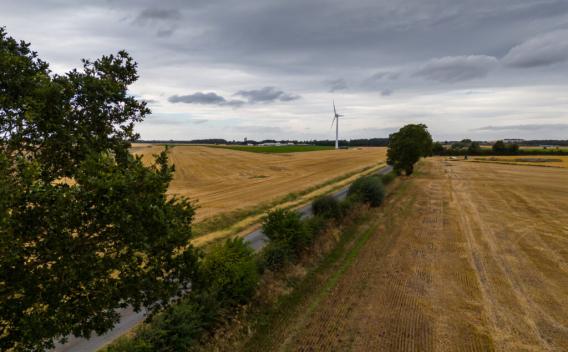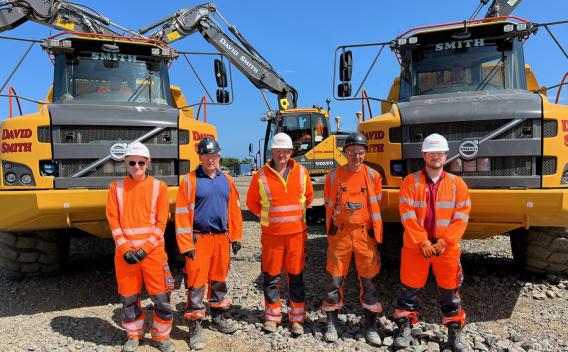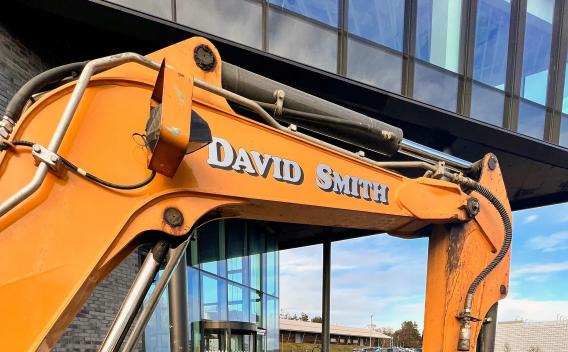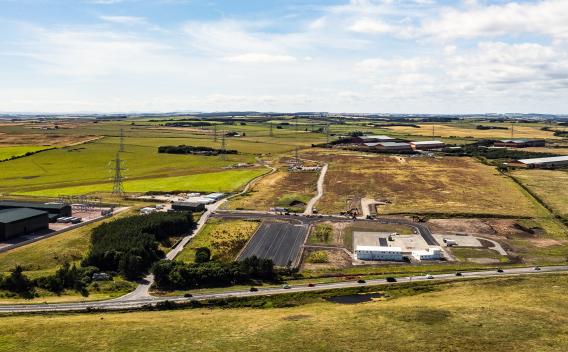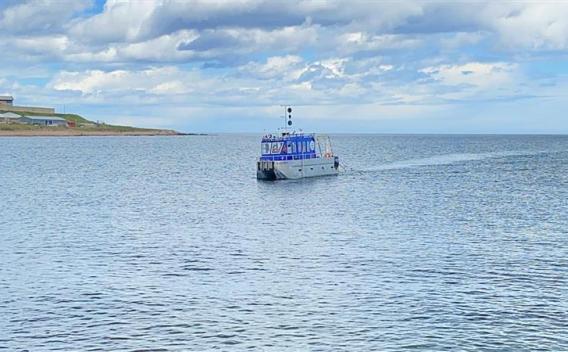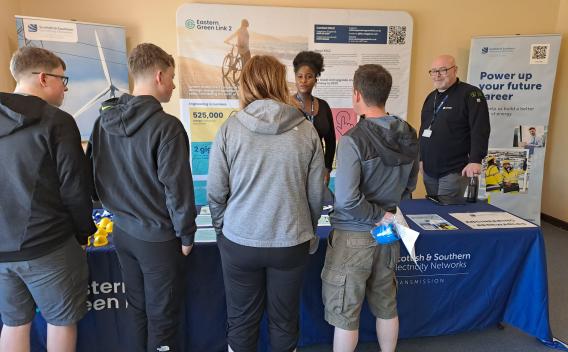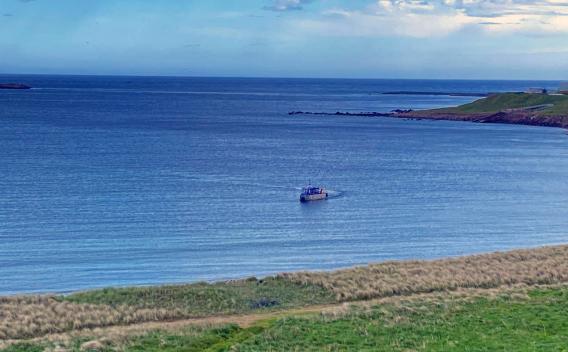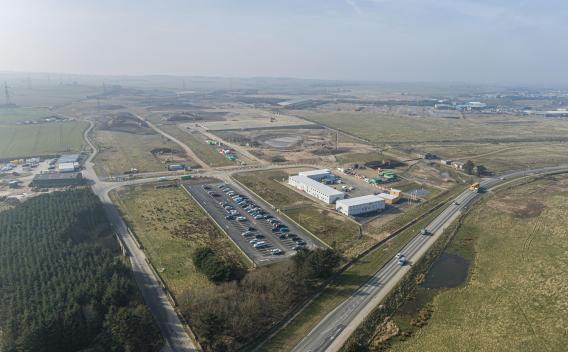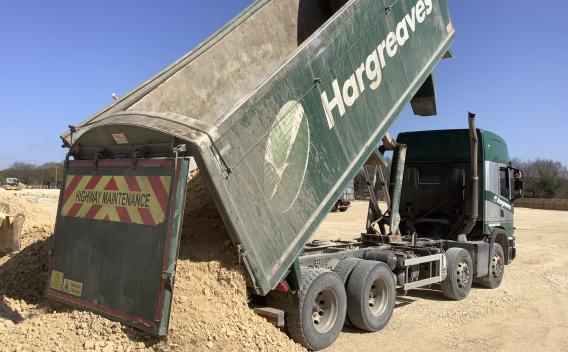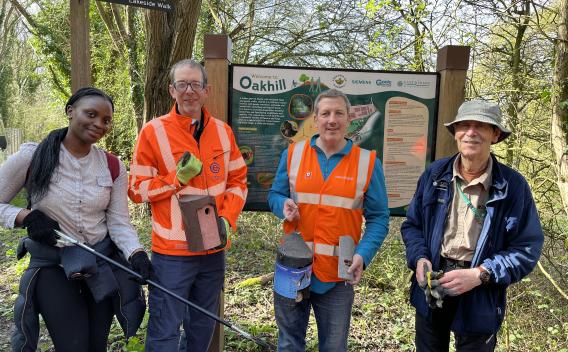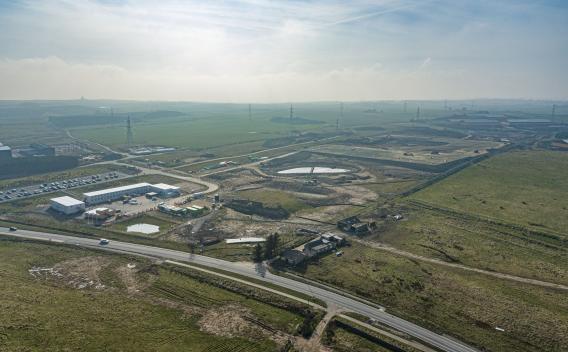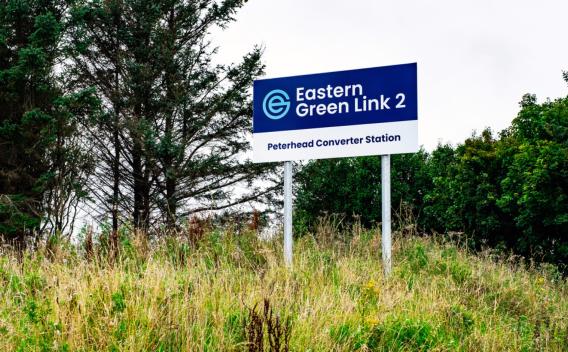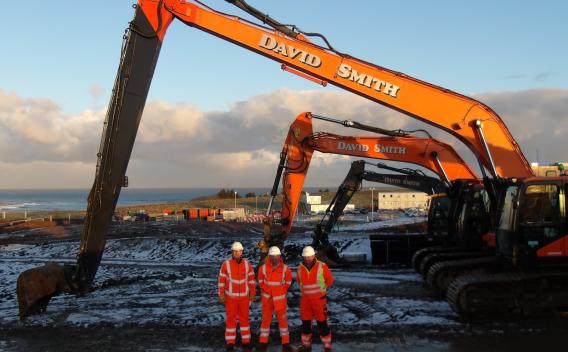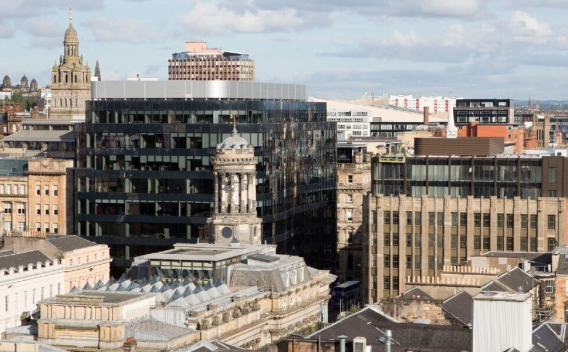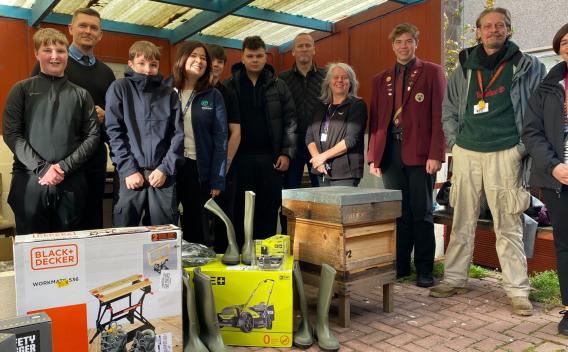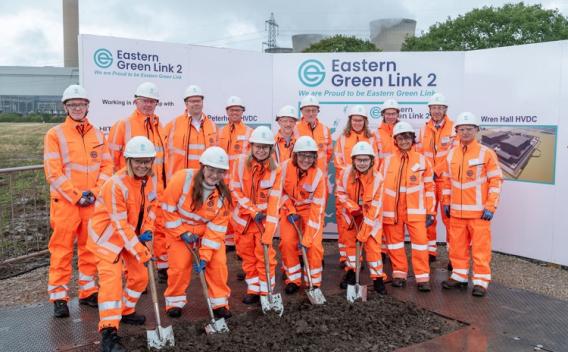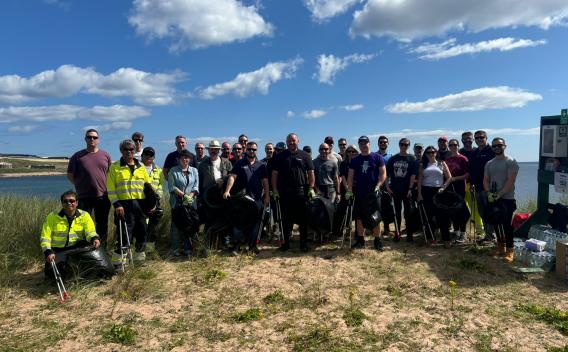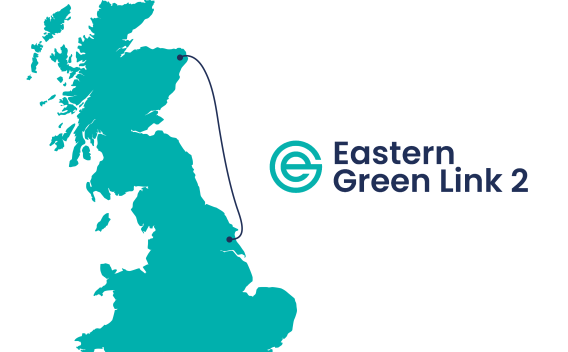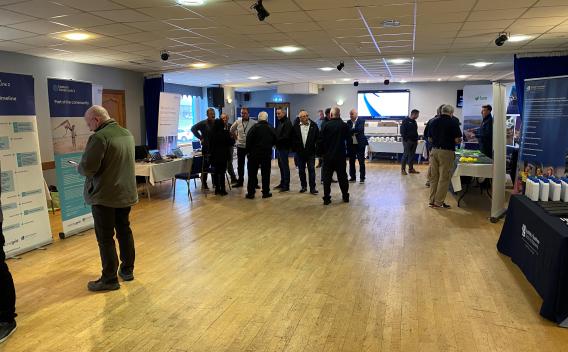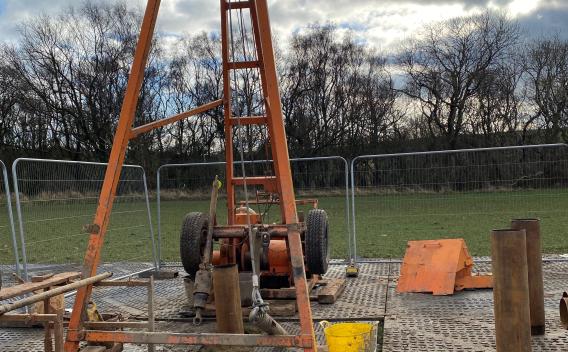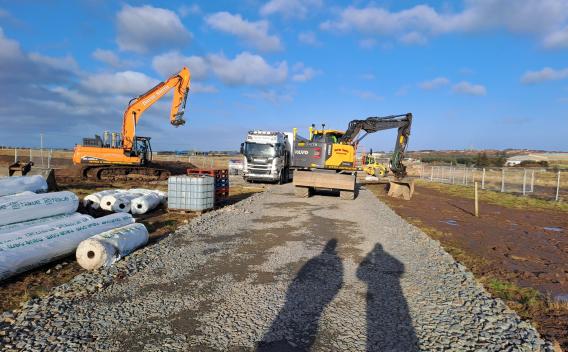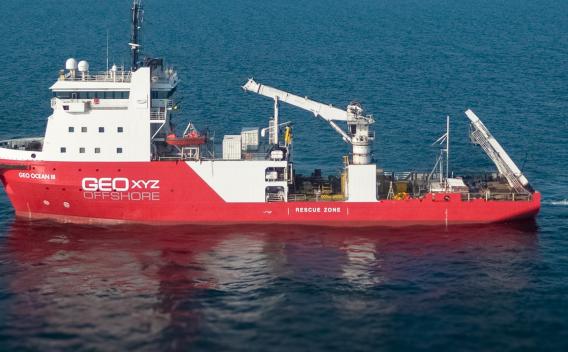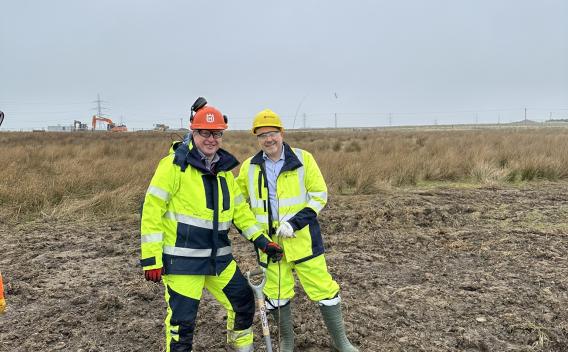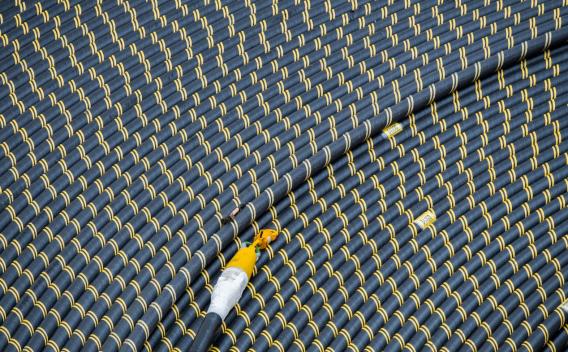Tree planting kick starts EGL2’s environmental legacy
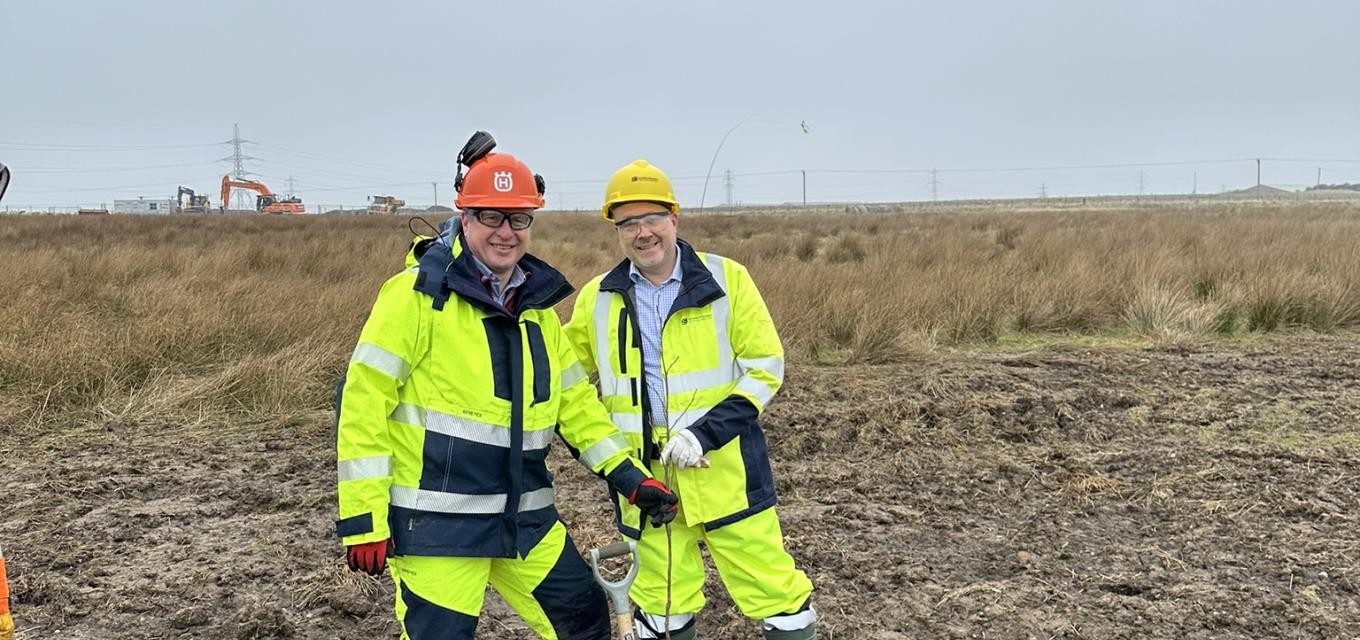
Over 150 hardy saplings were planted along the eastern boundary of the Peterhead converter station site in March, in a first step towards creating Eastern Green Link 2’s environmental legacy.
Planted in two rows, the avenue of native hardwoods chosen for the site include alder, willow, hawthorn and birch. The trees have been securely staked and encased in tree shelters to protect them from local deer and hares.
The team will carefully monitor the health of the trees while they take root. An optimal height of no more than 2m was selected to ensure the tree roots can get a good foothold and provide stability before they get too tall.
EGL2’s Converter and Civils Manager Dennis Speirs who oversaw the project said:
"We have taken measures to protect the trees from local wildlife, and while we can’t shield them from the worst of Peterhead’s weather, we’ve chosen species that are suited to the exposed position and can withstand the salt-laden winds blowing across the site from Sandford Bay.
Planting these trees at such an early stage of the project demonstrates our focus on creating an environmental legacy. We have ambitious biodiversity targets, and these native trees will create habitat for local species and food for insects, with the bonus of helping to screen the site."
With the principal contractors for the converter station, BAM and Hitachi, now on board, the team look forward to sharing more plans to enhance the local biodiversity.
Eastern Green Link 2 (EGL2), a joint venture project between SSEN Transmission and National Grid Electricity Transmission, is a high voltage direct current (HVDC) electrical ‘superhighway’ subsea cable that is to be built between Peterhead in Aberdeenshire, Scotland and Drax in North Yorkshire, England. The link will unlock the vast renewable energy potential of Scotland by delivering enough power to supply around two million homes in the UK and will provide essential reinforcements to the GB energy system.
The subsea superhighway of electricity transmission will help alleviate existing and future constraints on the electricity transmission network, supporting the growth of new renewable electricity generation and delivering a pathway to net zero emissions playing a vital role in helping achieve the government’s 2030 targets.
If you would like to discuss the project in more detail, please contact us at [email protected].



